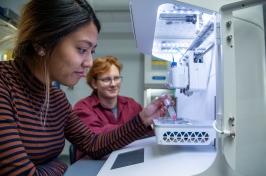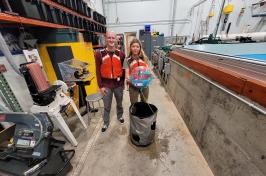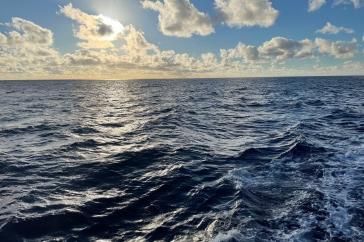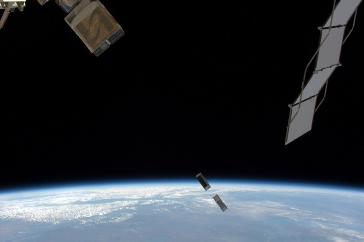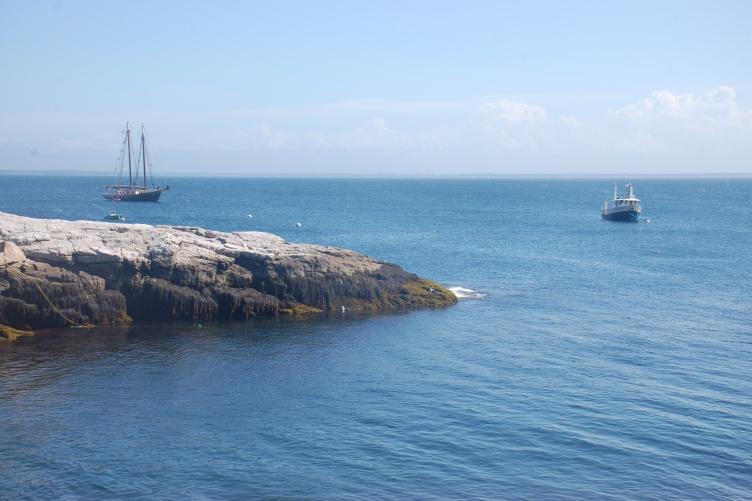
随着大气中的二氧化碳浓度持续飙升, scientists are turning to the ocean and wondering: Just how much carbon can the seas hold? 答案一直难以捉摸. 现在,一个 新的研究 published in the journal Nature offers the most accurate estimate to date of how much carbon dioxide is pulled out of the atmosphere and locked deep down in the ocean.
为了研究, 来自世界各地的研究人员, 包括永利app新版本官网地址, relied on an entirely different mathematical approach than in the past to arrive at their estimate of 8.25 petagrams, or billion metric tons, of carbon that gets pulled into the deep ocean each year. 的 study sheds light on the ocean’s biological carbon pump — the complicated series of processes mediated by marine plankton in which the ocean takes in carbon dioxide from the atmosphere and stores it for some period of time. By having a more accurate baseline number for the rate of carbon storage in the ocean, 科学家将能够更好地监测随着时间的变化.
“A unifying theme across the field of ocean biogeochemistry is that scientists are still trying to understand the global strength of the biological carbon pump,” 罗伯特Letscher他是联合国大学地球科学助理教授 海洋过程分析实验室 谁是这项研究的合著者. “We’ve been working on this for decades to figure out the carbon flux between the atmosphere and the deep ocean, 现在我们相信我们终于有了一个好的基线数字.”
Scientists have long estimated that number would fall somewhere between five and 12 petagrams, 但这是一个难以置信的大范围, Letscher说. Those previous estimates either relied on satellite data of light reflectance from the ocean’s surface — there are no satellites that directly estimate carbon in the ocean, he explains — or water samples that were collected from select regions and then that number was scaled up for the entire globe, 从而导致估计中的潜在范围较大.
该研究的作者采用了一种非常不同的方法, one that calculated the rate of carbon flux in its native unit to reduce possible element conversion errors when using the more commonly measured nitrogen, 海水中的磷或氧含量. 除了, their inverse mathematical model took “real-world data and then posed the question: What do the [biological] processes have to be to get this number? 这种方式, you can infer what the carbon fluxes had to be to get the picture we observed in real life,莱彻解释道.
Letscher’s research specializes in dissolved organic carbon — the carbon that is suspended in the water column and moves around via ocean currents — which accounts for approximately 20% of the biological carbon pump. He served as a consultant on the study to provide his expertise on this subject. Recent advancements in the mathematical tools available and newly public decades-long seawater databases of marine chemistry also helped the study’s authors arrive at their estimate.
“除了提供新的全球估计之外, our model diagnoses regions of the world ocean where the vertical versus horizontal components of the biological carbon pump dominate,Letscher补充道. “This will be very useful for predicting future changes in its strength as well as any efforts to conduct marine carbon dioxide removal to mitigate the effects of climate change.”
Funding for this study was provided by the National Science Foundation and the U.S. 能源部.
的 联合国大学地球、海洋和空间研究所(EOS) 是联合国大学最大的研究企业, 由六个以跨学科为重点的中心组成, 对地球和气候系统的高影响力研究, 空间科学, 海洋环境, 海底测绘和环境声学. With approximately 100 principal investigators managing more than 400 individual grant awards, 每年的开支超过9500万美元, EOS fosters an intellectual and scientific environment that advances visionary scholarship and leadership in world-class and graduate education.
-
写的:
丽贝卡Irelan 地球、海洋与空间研究所 丽贝卡.irelan@0933282516.com | 603-862-0990































